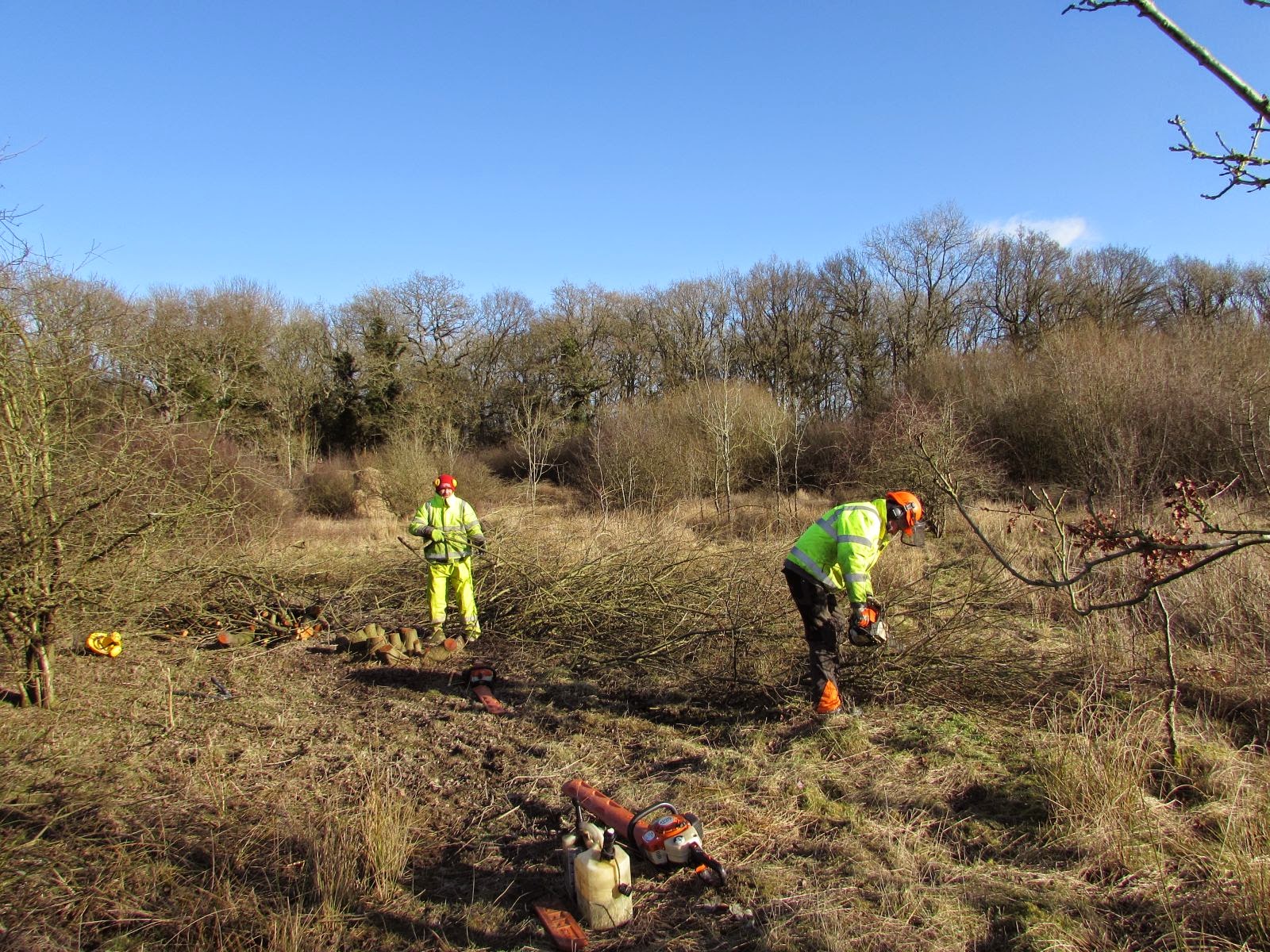This is all about the good work of JSA Landscape Group, Gatwick's team of grounds maintenance contractors. The past few years they have proved invaluable in our larger-scale habitat and conservation project works.
Goat Meadow stag beetle loggery; withstands clambering human test
The only problem with handling all this big equipment is how it requires another level of logistical innovation for otherwise straight forward habitat enhancements...
Fred creates grass cutting piles for Grass Snake breeding areas
In terms of access, Ashley's Field in the Land East of the Railway Line is no problem for Fred and his big ol' tractor 'n' trailer. Goat Meadow however is a remote piece of grassland in the middle of some boggy woodland, so shifting materials and equipment here presents a much greater challenge...
Moving large deadwood through Upper Picketts Wood
Transporting grass cuttings to Goat Meadow
Our sincere apologies once more to Tom S. and his volunteers for the state of their once carefully edged steps and footpath... Lucky we were able to supply you with all those extra wood chippings eh!
Mick and chainsaw vs. Willow in the North West Zone
In the depths of winter I like to take Mick and his team to all the best places, including trench-foot-inducing boggy grasslands to the west of Brockley Wood. It's hard to imagine right now, but in the height of summer-time these areas are alive with butterflies, bees and burnet moths, blissfully unaffected by the airfield just a few hundred meters away.
Gradual reduction of the Willow scrub to maximise the grassland area
These neatly staked brash-piles got the Thomas Simpson seal of approval (phew)
Hay cut along the River Mole, 2014
The cut-and-collect of our grasslands is our final job for the summer. By cutting around late September, we will minimise disturbance to any grassland species such as Harvest Mice, as well as allowing the maximum amount of meadow flower seed to drop.
Invasive species management
Lauren might be the smallest member of the JSA team, but it doesn't stop her from taking on forests of Himalayan Balsam growing along Gatwick's waterways (actually she's not that tiny, she's just very far away).
Nick uses a brush cutter to keep the woodland rides open. Horleyland Wood
Scrub management along the south bank of Man's Brook.
This allows more sunlight to hit the banks, increasing floral diversity
This allows more sunlight to hit the banks, increasing floral diversity
Scott T. from Per Hire is another fella I've been fortunate to work with, providing us with his skills and experience in operating the 360 excavators. He has bags of energy and is an excellent problem solver; much appreciated when it comes to the difficult habitat works such as these...
Dredging out a blocked channel along the River Mole to improve flow
Massive hibernaculum creation - North West Zone
Another hibernaculum in Goat Meadow, Land East of the Railway Line
Scott T's experience with almost every kind of digger means that nothing is too big or too small to stack...
Beginning a Stag Beetle loggery
On occasion he's allowed to show off.
Unsubtle bag theft
Many thanks once again to all of the JSA's staff, getting these trickier habitat works 'off the ground'!





































